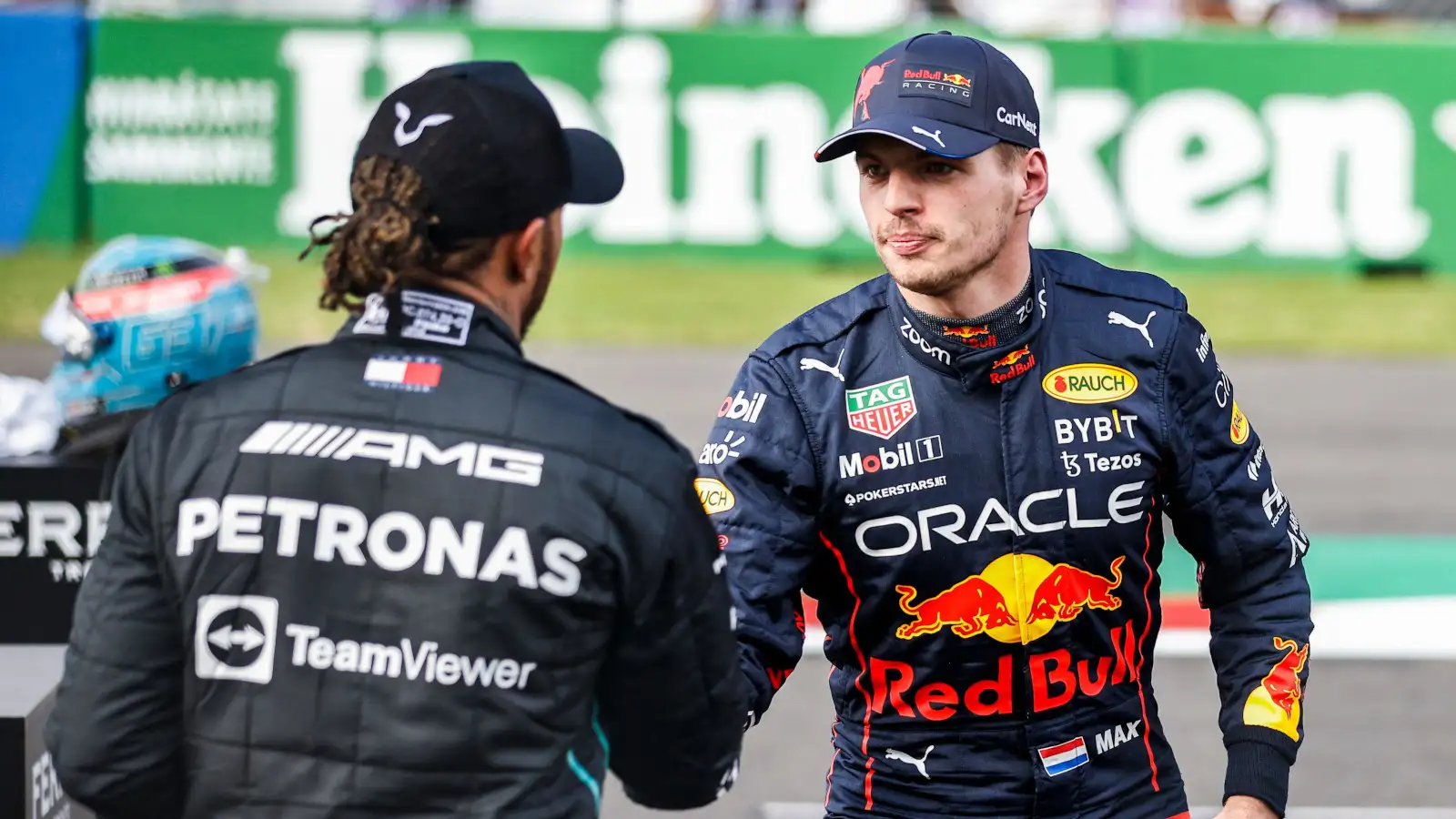F1 overtaking rules: What are the rules of engagement?

Red Bull driver Max Verstappen shakes hands with Lewis Hamilton. Mexico October 2022
Overtaking in Formula 1 is far from a ‘free-for-all’, with strict rules in place on how drivers can attack, pass, and defend, depending on the type of corner.
Given the highly-prescribed nature of most of the regulations in Formula 1, it’s somewhat surprising that the rules regarding overtaking were never made particularly clear.
While there was a general sense of ‘the right way’ to overtake, there was little clarity on what is ‘the wrong way’, with the FIA, F1’s governing body – never making the rules of engagement particularly public.
However, in the wake of the fallout from the controversial ending to the 2021 season, the FIA made changes to offer some insight and transparency on how the race stewards adjudge racing situations.
To that end, ahead of the 2022 season, the FIA published a copy of the ‘Driving Standard Guidelines’ – the rules to which drivers must adhere to while in the heat of battle.
These outline what is permitted, and what isn’t, when drivers go wheel-to-wheel, and was published “in response to a request from F1 drivers to confirm the factors that may be taken into account by the FIA stewards, when decisions are made in relation to certain repeated infringements that occur in the course of a season”.
Below, we’ve detailed the rules that are currently in place for drivers overtaking in Formula 1.
‘Overtaking on the inside of a corner’
Put simply, this means that the attacking driver has managed to get their car into a position where they are on the side of the track where the defending driver needs to turn, ie. alongside on the right heading into a right-hander, or alongside on the left into a left-hander.
Overtaking on the inside of a corner is, by some margin, the most common way to overtake, given the lack of defence that the overtakee has once an attacking car has taken this position. But, at what point does the ‘attack’ become an ‘overtake’?
“In order for a car being overtaken to be required to give sufficient room to an overtaking car, the overtaking car needs to have a significant portion of the car alongside the car being overtaken and the overtaking manoeuvre must be done in a safe and controlled manner, while enabling the car to clearly remain within the limits of the track,” read the FIA’s guidelines.
“When considering what is a ‘significant portion’ for an overtaking on the inside of a corner, among the various factors that will be looked at by the stewards when exercising their discretion, the stewards will consider if the overtaking car’s front tyres are alongside the other car by no later than the apex of the corner.”
‘Overtaking on the outside of a corner’
This is a less common type of overtake, given that a driver usually needs to have a significant pace or grip advantage to make this work, as well as some cooperation from the driver being overtaken. This is due to the overtaking driver having to go ‘the long way around’, taking a less than optimal line, while the defending driver’s trade-off is having their apex/exit speed compromised.
An example of the risk involved in this type of move can be seen almost every year at the Austrian Grand Prix where, in 2022, Sergio Perez retired from the race after being struck by George Russell while passing the Mercedes around the outside.
“In order for a car being overtaken to be required to give sufficient room to an overtaking car, the overtaking car needs to have a significant portion of the car alongside the car being overtaken and the overtaking manoeuvre must be done in a safe and controlled manner, while enabling the car to clearly remain within the limits of the track,” the FIA have clarified.
“When considering what is a ‘significant portion’, for an overtaking on the outside of a corner, among the various factors that will be looked at by the stewards when exercising their discretion, the stewards will consider if the overtaking car is ahead of the other car from the apex of the corner.
“The car being overtaken must be capable of making the corner while remaining within the limits of the track.”
FIA provide further clarity
The same rules will apply throughout any corner type, such as chicanes and esses, meaning drivers could switch from the outside position to an inside position very quickly – the rules for each type will change for each corner the drivers negotiate.
Further to that, as seen on numerous occasions this year, circuit track limits have been more tightly outlined.
“For the avoidance of doubt, the white lines defining the track edges are considered to be part of the track, but the kerbs are not,” say the FIA.
“Should a car leave the track for any reason, the driver may re-join. However, this may only be done when it is safe to do so and without gaining any lasting advantage.
“A driver will be judged to have left the track if no part of the car remains in contact with the track.”
As for defining a ‘lasting advantage’, well, the FIA have cleared that one up too.
“If a driver, for example, short-cuts a chicane or a corner, it is his or her responsibility to clearly give back the advantage he or she gained,” the Driving Standards Guideline read.
“This may include giving back the timing advantage up to drop back a position behind the relevant driver.”
As with most non-technical rules in Formula 1, the FIA have clarified that these statements are “merely guidelines to assist the stewards” and “are non-binding”.
“All stewards’ decisions will be made pursuant to the FIA International Sporting Code read in conjunction with all relevant regulations applicable to F1.”

